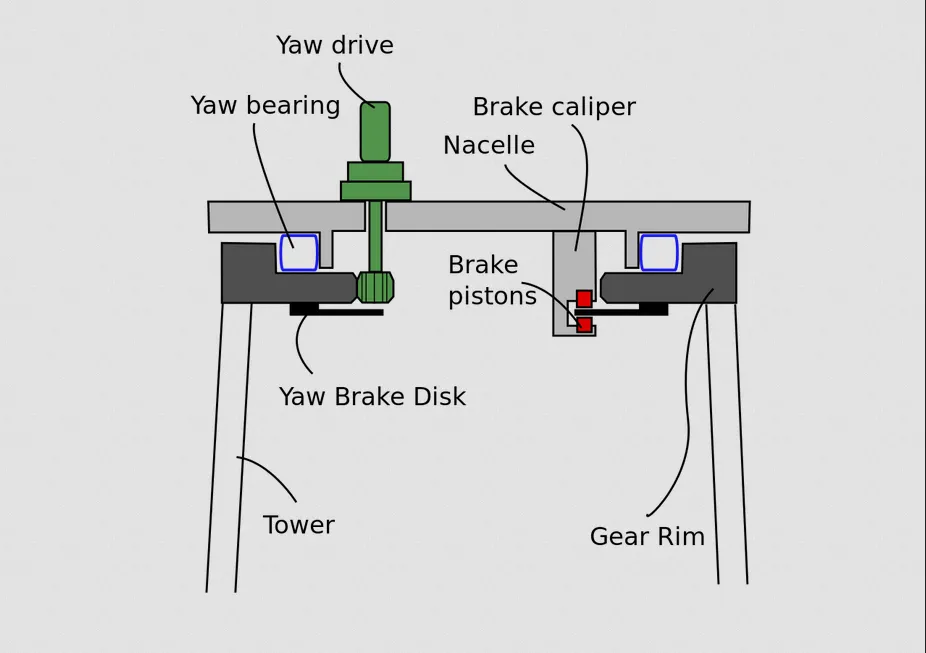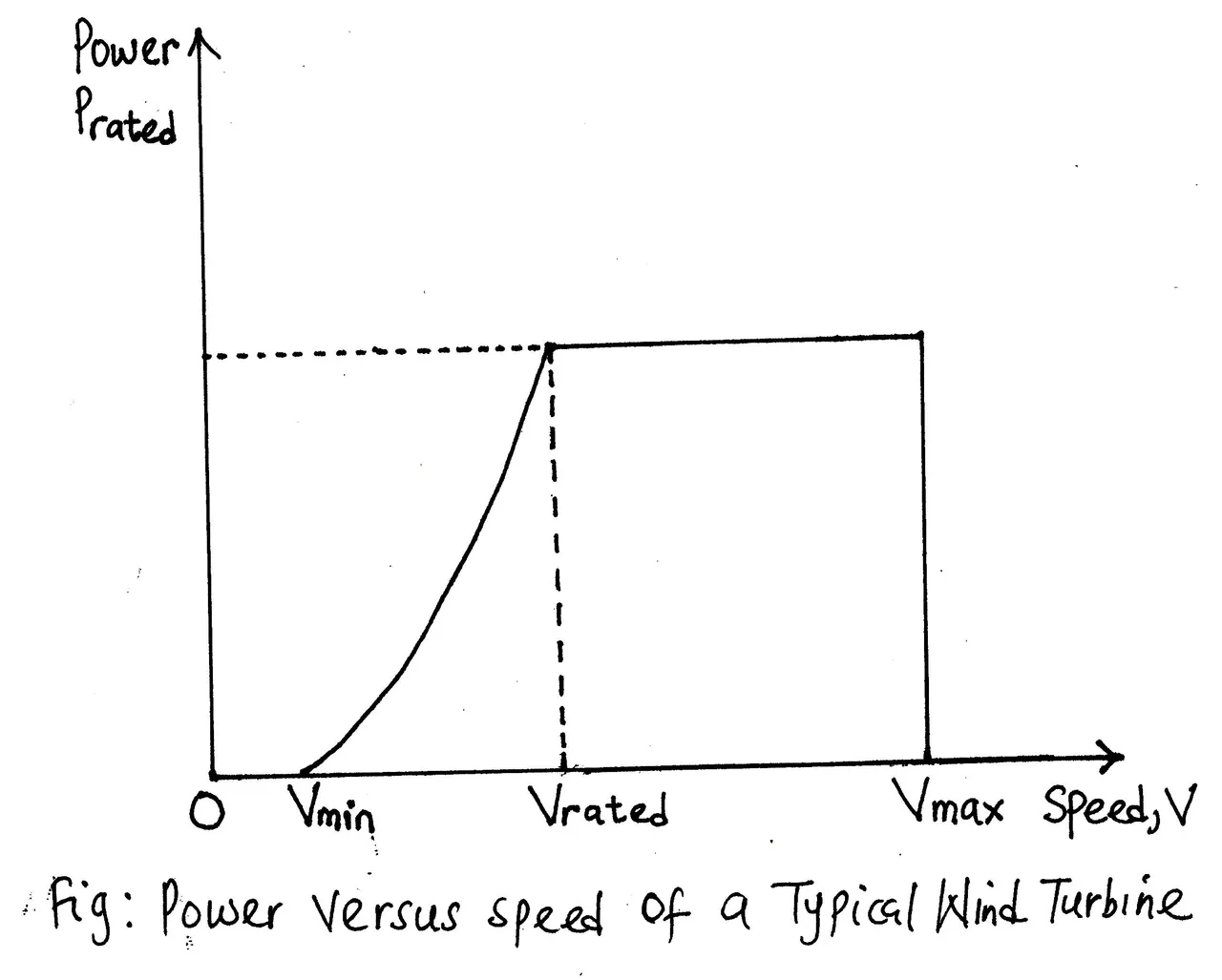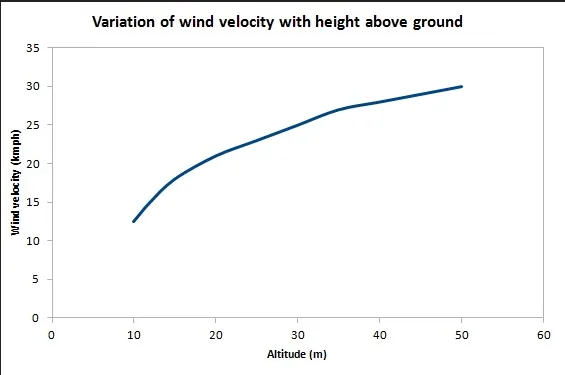We have talked about the hydraulic energy inherent in water which is free as long as the natural topography supports it. It is natural we all look at wind energy which is also available to us free. Wind energy is derived from solar energy and is one of man’s oldest sources of power used to supplement the productive capacity of the muscle.

On the sea it has been used to propel ships, and on land it has served variety of purposes such as: pumping fresh for domestic livestock and agricultural needs, irrigation fields, powering agricultural tasks, such as grinding corn, wheat and sugar cane, and threshing, chaff cutting, and winnowing, cutting wood, pumping saline water in salt works, generating electricity for a variety of purposes.
Wind Turbines
As a result of uneven heating of the earth’s surface by the sun, air currents are created, which flows between the area of different temperature. The wind power which these air currents generate can be converted in rotational motion by the use of windmill. This motion can then be used, for example for driving a generator for the production of electricity. Wind turbines generate power by converting the momentum in the wind into mechanical power and converting the rotating mechanical power into alternating current power via a standard generator technique.
The formula below gives the theoretical power in the wind in area A (m2):
P = 1/2 ρAV3
Where P = Power
ρ=air density (1.201kg/m3 at STP)
V = wind velocity (m/s)
A factor gives the fraction of power in the wind captured by a wind turbine, CP called the power coefficient. The power coefficient CP of a wind turbine is the measure of the efficiency of the wind turbine in which it converts the energy in the wind into electricity. We have given the formula to calculate the total power inherent in a given area of the wind (P = 1/2 ρAV3).
To get the coefficient of power for specific wind speed, you can easily divide the electricity produced by the wind by the total energy inherent in the wind at speed under consideration.
CP = (Electricity Produced by Wind Turbine)⁄(Total Energy Obtainable in the wind)
Wind turbine harness the energy of the wind by impeding the wind speed. That is, if you are to get 100% efficiency from a wind turbine, the wind turbine must be capable of stopping 100% of the wind in which case the rotor must be designed to be a solid disk which would render it static and as such no kinetic energy would be converted.
On the other hand, if there were to be a wind turbine with just one rotor blade, most of the wind will bypass or miss the blade entirely, and the wind would retain its kinetic energy.
Betz Limit
Albert Betz was a German physicist who established that no wind turbine is capable is capable of converting more than 59.3% of the kinetic energy of the wind into mechanical energy turning the rotor. This theory is known as the Betz limit, and it is the theoretical maximum coefficient of power that any wind turbine can offer.
Thus, the maximum theoretically obtainable power of the wind is, therefore:
P = 0.2965ρAV3
The density of air varies with altitude and with the density of air and with the atmospheric conditions. At STP conditions, 1000 mbar and a temperature of 293 Kelvin (680F) the density of air is 1.201Kg/m2. The density of air decreases slightly with increasing humidity, notwithstanding corrections for this quite negligible in wind power calculations.
The density of dry air can be calculated for any temperature and barometric pressure by utilising the ideal gas laws. We can simplify these using air properties:
ρ= density (Kg/m2) =(0.349 (atmospheric pressure mbar))/(Temperature (0K))
During the year, the air density may vary due to the pressure and temperature changes by 10-15%. The wind turbine designed before the 20th century operated aerodynamically as drag devices, reaching a maximum conversion efficiency of below 10 percent. Modern utility-grade wind turbine utilises aerodynamic lift and can achieve maximum efficiency of close to 50 percent.
The principle of operation of a wind turbine is quite simple. Some rotor blades are mounted on a rotating axle, and the passage of wind causes these blades to move. Unfortunately the speed of rotation is too low to produce a significant quantity of electricity, and for this reason, a gearbox is employed to increase the speed of rotation. The gearbox is coupled to a generator which converts the rotating movement into electricity, similar to the principle utilised in dams.
The vital elements of a wind turbine are the structural components of the system, the aerodynamics, the electrical conversion system and the control system. The figure below illustrates the major subsystem and how they are coupled together for efficient operation.

The generator often adopted for the wind turbine is induction generator owing to its better mechanical compatibility to rapid wind fluctuations as compared to synchronous generators. The induction type generators have the added advantage of being cheaper than synchronous generator with better ruggedness suited for operation in the environment.
When you connect the wind turbine to the grid system, it becomes imperative to provide a step-up transformer to boost the voltage from the operating voltage of the generator to the transmission voltage of the utility line.
To maximise the power of the wind, we need to maintain the top section of the wind turbine facing the direction of air using yaw control so that the rotor is perpendicular to the wind. The wind turbine yaw mechanism is used to position the wind turbine rotor against the wind. Yaw error occurs when the rotor is not facing the wind.

Also, the pitch of the blade (the ability to adjust the rotor blade to move in and out of the wind direction to control the speed for power generation) may be adjustable to ensure that the generator axis still achieves a constant speed even when the wind speed changes;
Experience has shown that turbine between the rating of approximately 200KW-500KW is the most economical and with regards to maximum economic size, sizes of 30-40 meters (300 to 750KW) rating give the best economics.
The range of operation of a wind speed and is as depicted below in the diagram

At low wind speed, the energy available to operate the turbine coupled to the generator is insufficient, and hence no power is produced. As the speed increases and it gets up to Vmin, which is known as the cut-in speed and occurs most often at the speed of 3 and 5 m/s, power starts to be generated. The power generation continues until the rated power Prated is produced at rated wind speed Vrated. At this point the turbine is controlled, usually by altering the blade angle or pitch, to give the rated output up to a maximum wind speed Vmax. Beyond this point, the blade is furled (turning the rotor blade away from the direction of the wind) and the unit is shut down to avoid excessive wind loading.
For significant generation of power by the wind power plant, it becomes imperative for there to be a strong wind which can spin the rotor blade very fast but there is a level of wind speed (Vmax) that mechanical strength and design consideration limits the speed at this point and it is constant for each design.
Beyond this point, the pitch control will furl the rotor blades to prevent it from spinning too quickly, and we can achieve this by turning the blades away from the direction of the wind.
Furling is necessary to forestall the turbine blades from being ripped off due to excessive speed. Some of the adverse effects of excessive speed include:
- Damaging the alternator due to extreme heat
- Ripping off the rotor blades from the tower
- Increased mechanical stress on the tower which holds the rotor blade against the wind.
Wind Variation with Height
The wind speed in general increases with height from the surface to the upper troposphere. We can attribute this increase in wind speed to warmer air found as you go higher up. More heated air is less dense and causes the air to move more freely. Again the surface frictions reduces as you progress higher above. Surface friction can result from air being slowed by houses, trees, rocks, mountain lines etc. Another reason for much speed as you go higher up can be linked with the decrease in density of air as one moves higher up. It is easier to propel a less dense air at more top speed than to drive a much more dense air.

Advantages of Wind Energy
- It is a renewable form of energy and hence inexhaustible
- It is one of the cleanest forms of energy and poses no hazard due to emissions and waste by-products.
- Wind energy is free for anyone. No cartel or group influences its distribution as is evident with other energy sources.
- Wind energy does not occupy a vast area of land, and most rural activities can still go on alongside the power generation.
- Wind energy is modular and allows for fast and incremental development as the need arises. This modular nature enhances the ability of the majority of the plant to continue producing if a component in one wind generator fails.
- Since no fuel is needed to run the plant, it offers less environmental risk.
Conclusion
In recent times, the shift is to the power plants based on renewables which are mostly environmentally friendly. Wind as a source of power is getting increasing recognition, and the reason is not farfetched because it is abundant, inexhaustible renewable and non-polluting. It does not involve depletion of scarce resources. The running cost of a wind turbine is negligible and in some area of the work like in Denmark wind can blow up to 320 out of 365 days in a year making it have the edge over solar energy which is more seasonal and intermittent.
Unfortunately, wind energy cannot be said to be reliable or steady, and as such there should be a means of storing the energy in batteries during strong winds and be called upon during still air to give back.
More importantly, it does not add to the heat problem we are all are aware of today. Investment in wind energy is essential as it would reduce transmission line congestion and brings the power closer to the consumers with minimal losses and saving in power system networks.